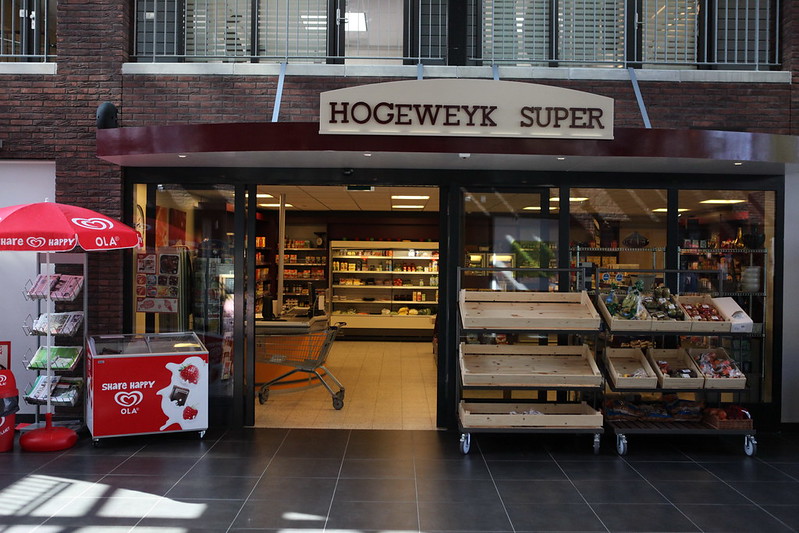Can dementia-friendly architecture help people cope with the disabling symptoms of Alzheimer’s disease and related dementias (ADRD)?
It’s becoming more than just a theoretical question in clinical and design circles, given that an estimated 5 million people in the U.S. currently live with ADRD, a figure that the Centers for Disease Control projects will grow to 13.9 million by 2060.
What Is Dementia-Friendly Architecture?
Dementia-friendly architecture is part of the larger dementia-friendly design movement, which looks at ways architecture and design can help reduce distress and increase well-being among people with ADRD. Part of a trend towards universal/accessible design, it involves rethinking the way we create environments for them and their caregivers, moving away from purely clinical and safety concerns – although these remain essential – and towards environments that promote continued engagement in life.
Dementia Villages
In the early 1990s, a group of Dutch clinicians, caregivers and families of ADRD patients in a traditional nursing home came together to brainstorm a better way to care for ADRD patients. They visualized a care setting that allowed people to live as normally as possible, in familiar surroundings and with other people of similar backgrounds that would reinforce social ties and a sense of comfort and community.
The result, Hogeweyk, the world’s first dementia village, opened in Weesp, Netherlands, in 2014. Designed by Dutch architecture firm Molenaar&Bol&VanDillen, it comprises a group of 23 homes housing 152 people, a grocery store, a restaurant, bar and theater, surrounded by several acres of streets, gardens and parks that provide a safe environment for residents to roam.
Residents are housed based on seven “tracks,” depending on their backgrounds, beliefs, values and previous lifestyles, and they manage their own daily living activities with the aid of caregivers who are familiar with their conditions and abilities.
Hogeweyk’s success paved the way for more experiments in dementia-friendly architecture and design, including a dementia village under construction in southwestern France and Glenner Town Square near San Diego.
Recreating a Lifestyle with Dementia-Friendly Architecture
Glenner Town Square is the first dementia village in the U.S., and it takes the model pioneered by Hogeweyk a step further, design-wise.
The architecture is specifically designed to evoke a time and place that its residents will find familiar and comforting: the 1950s–1960s-era U.S. small town. The town square is almost 10,000 square feet of “Main Street, USA,” with a built environment that includes a 1950s diner, a retro movie theater, city hall and a series of Eisenhower-era storefronts staffed by caregivers trained to interact with dementia patients.
Unlike Hogeweyk, Glenner Town Square is a day program rather than a residential facility for people with ADRD, but as in its Dutch predecessor, patients can participate in activities with interest- and function-related groups or roam about the “town” freely or with families, conducting daily activities with as much or as little assistance as they need.
Design and Architecture as Therapy
The idea behind the American Graffiti design is to connect patients, most of whom were teens and came of age during the Baby Boom, with their most powerful and formative memories, as a way of keeping them connected with their lives and the world around them.
It builds on a technique known as reminiscence therapy, which uses prompts, including physical objects and environmental cues, to facilitate discussion of ADRD patients’ past experiences, often with family or other close caregivers. The current evidence for reminiscence therapy is limited, but the proponents of dementia villages like Glenner Town Square see potential benefits for mood and other quality-of-life measures, such as reduced agitation, among ADRD patients.
The built environment is also emerging as an important aspect of dementia care in more traditional facilities such as nursing homes. People with dementia often have difficulty with spatial disorientation, and the physical environment can be either beneficial or harmful. Research continues to inform architectural design for dementia-care facilities, and architects and clinicians are teaming up to test design strategies, such as geometric simplicity, clear architectural markers of an area’s function and straight pathways to important areas, to help keep patients oriented and comfortable.
The Future of Dementia-Friendly Design
While there is some controversy over the benefit of “dementia villages” – critics compare them to a Truman Show-like deception of vulnerable patients – it’s clear that adapting our built environment to better meet the needs of people with ADRD is an idea that is here to stay.
As architects and designers, we have a responsibility to consider the impact our work has on individuals and society. Given the challenges posed by an aging population combined with increased environmental pressure from global climate change, it’s imperative that we continue to innovate and work with our colleagues in other fields to rise to the challenges.
A version of the post first ran in 2019.


